It’s surprisingly easy to make homemade cheese bread. This soft buttery yeasted bread is twisted up with cheddar cheese, but you can use any cheese variety you love. Bake the bread in a loaf pan, then slice it to reveal the 2 cups of swirled cheese inside. For a sweet version, try our cinnamon crunch bread.
This recipe is brought to you in partnership with Red Star Yeast.
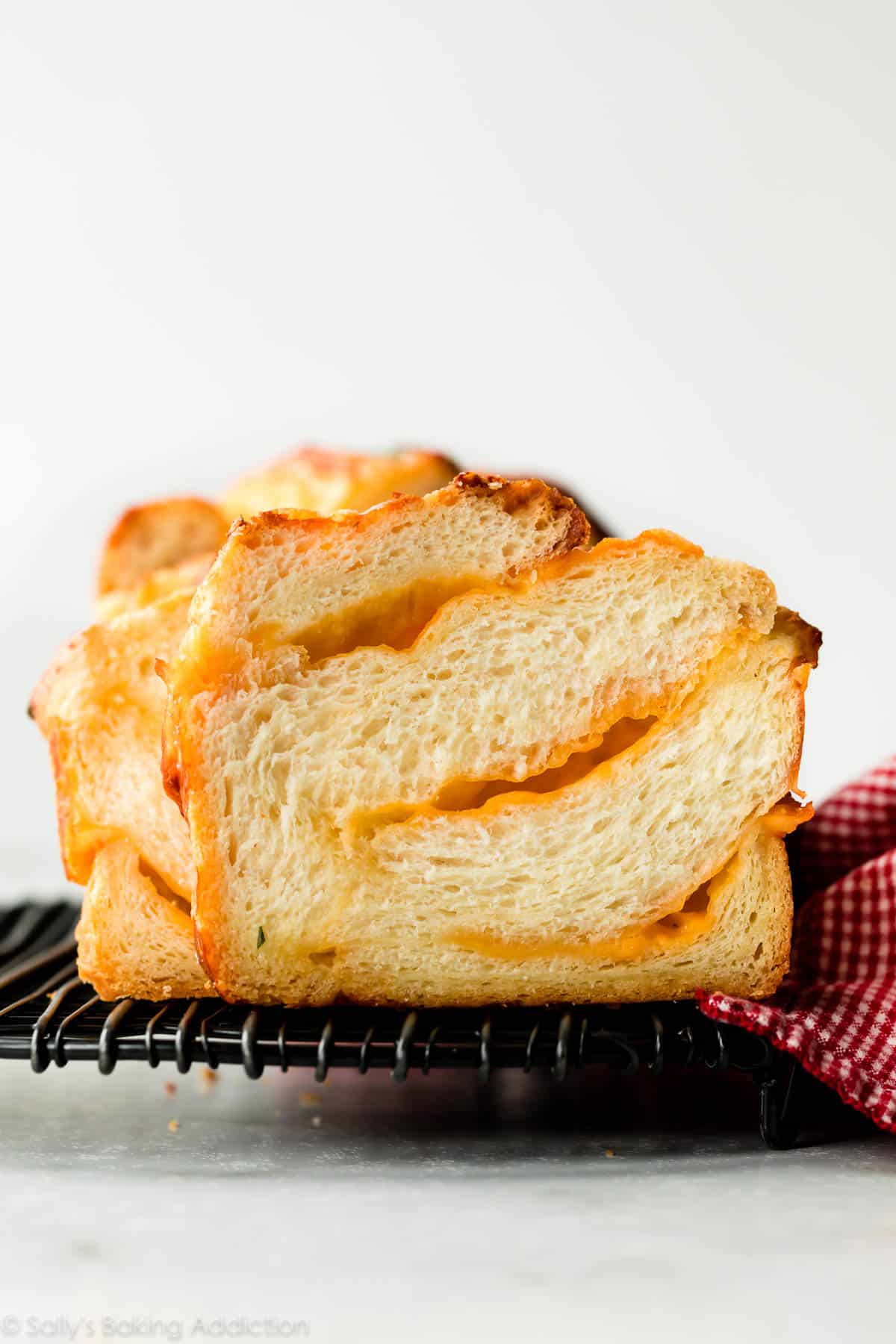
The inspiration behind this recipe comes from a local bakery, where I’ve picked up DOZENS of cheese bread loaves. Each of us love it, my almost 2 year old being the biggest fan. ♥
Cheese and bread. It’s obviously the greatest loaf of all time.
So I decided to make it myself. Brace yourself for impact!
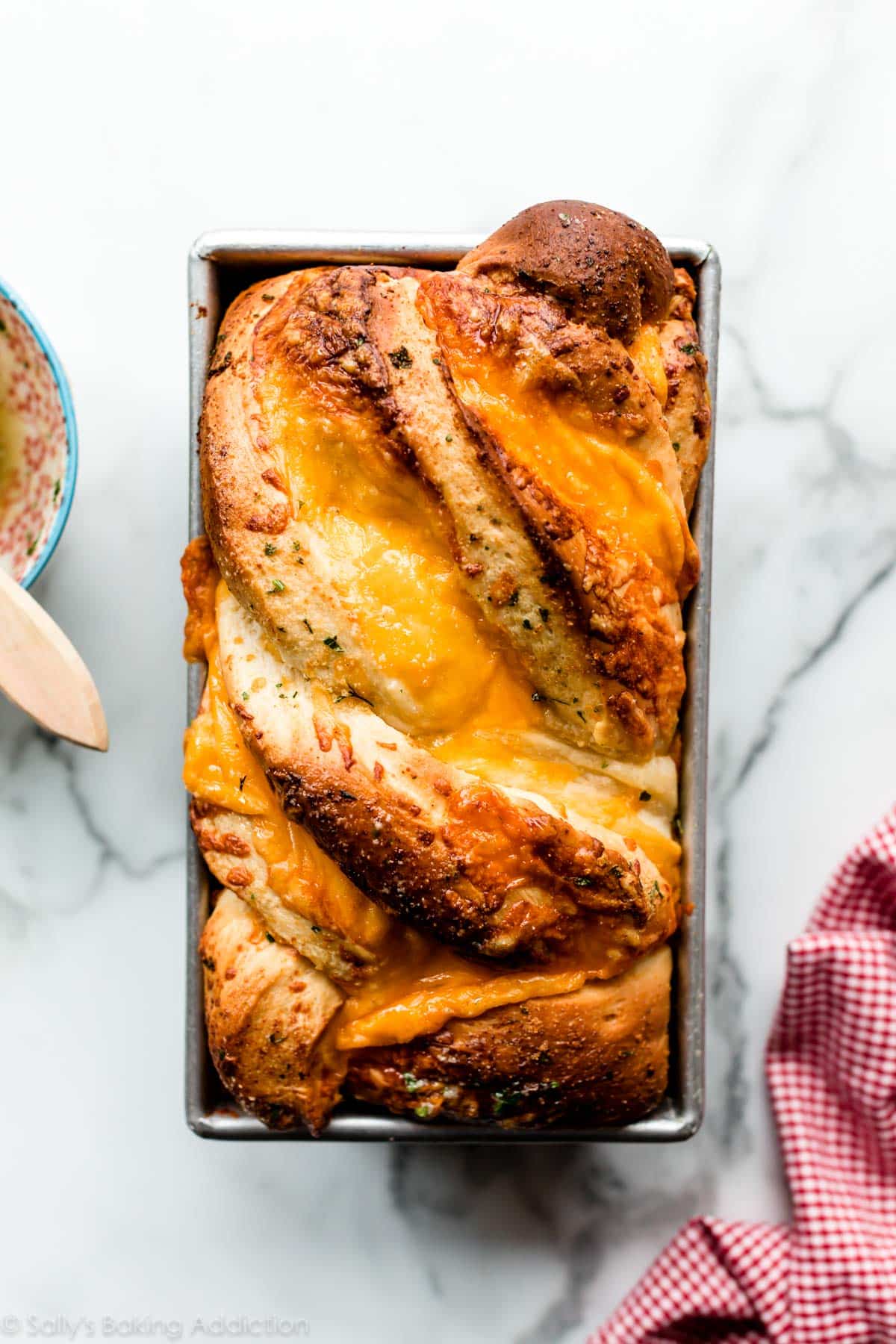
What is Cheese Bread?
Let’s back up. This cheese bread is homemade bread swirled with real cheese. It’s a simple yeasted dough that I adapted from my sweeter homemade homemade cinnamon swirl bread and my basic sandwich bread. Each slice is extra soft with a chewy crust and ribbons of melted cheese throughout. For extra flavor, brush the top of the unbaked bread with garlic herb butter. The cheese on top crisps up, while the garlic butter infuses down into the bread.
I have 3 loaves in the freezer right now. Things would become dangerous if there wasn’t a constant stash of cheese bread in our house.
Video Tutorial: Cheese Bread
Let’s walk through each step.
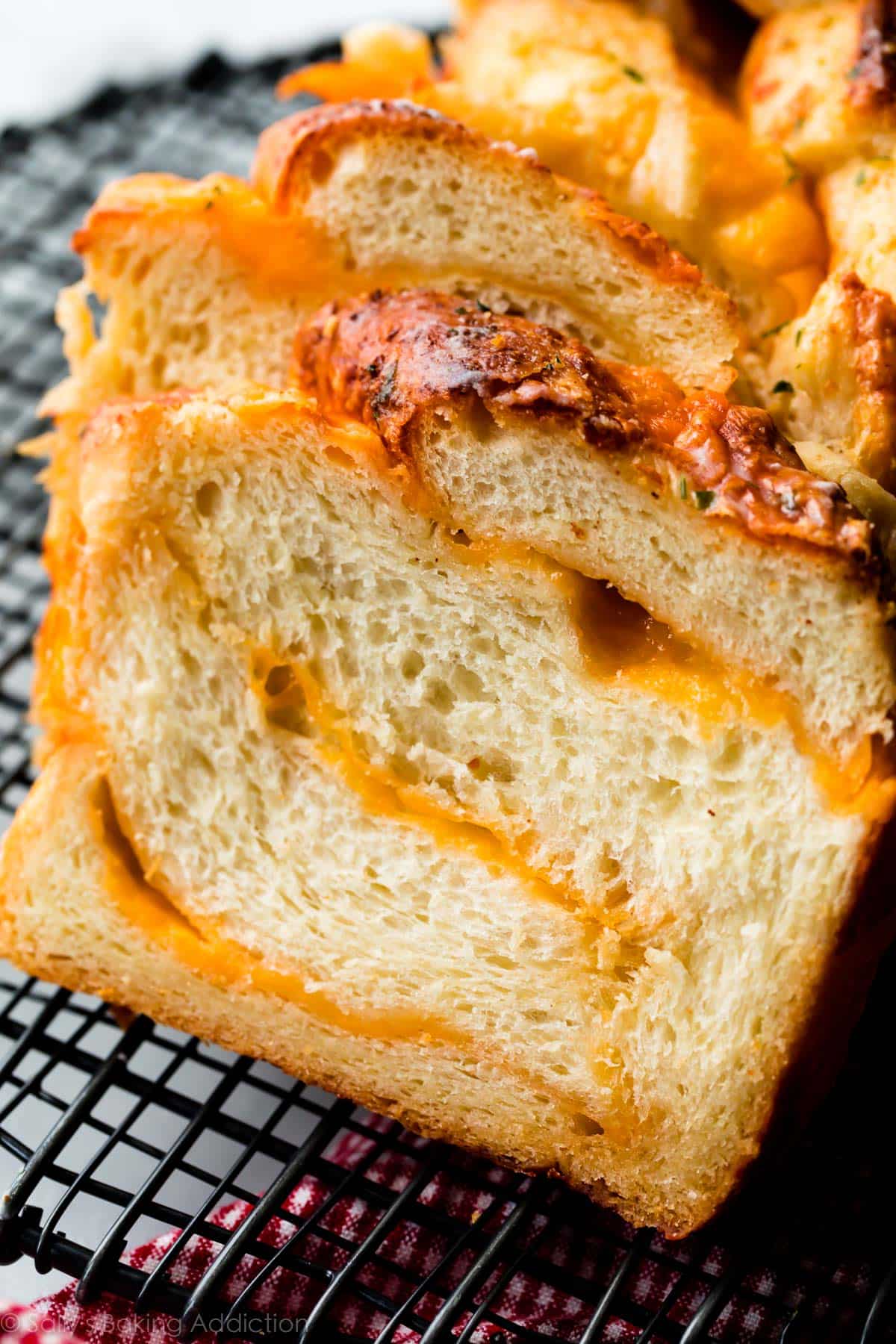
Ingredients in Cheese Bread
- Buttermilk: Liquid activates the yeast. For soft, flavorful, and chewy cheese bread, use a combination of buttermilk and water. Nondairy, whole, or low fat milks work too, but buttermilk produces phenomenal flavor and texture.
- Water: Although you could use all milk as the liquid in this dough, I preferred a mix of water and buttermilk. All milk made this taste more like an overly soft dessert bread.
- Yeast: You can use active dry yeast or instant yeast. If using active dry yeast, the rise times will be a little longer. I recommend Platinum Yeast from Red Star, which is an instant yeast that is blended with natural dough improvers.
- Sugar: Sugar feeds the yeast, increases its activity, and tenderizes the dough.
- Melted Butter: Butter promises a soft and flavorful bread. Use melted butter. I found that room temperature butter produced a cakey-er and less flavorful end product.
- Egg: 1 egg provides structure and flavor.
- Salt: Bread would be seriously lacking flavor without salt!
- Garlic Powder: Garlic powder adds incredible flavor to the dough AND to the topping. If using fresh garlic, use 1 finely minced clove in the dough and 1 teaspoon minced garlic in the topping.
- Bread Flour: Higher protein flour like bread flour is best for this bread recipe because of its strong gluten formation and high rise. All-purpose flour will yield a flimsy bread.
- Cheddar Cheese: I recommend cheddar cheese, but you can use another harder cheese such as pepper jack, gouda, or colby cheese. Avoid very soft cheeses. For best taste and texture, shred the cheese off the block yourself with a cheese grater.
Did You Know?
The crustier and chewier the bread, the less fat in the dough—aka a lean dough. Chewy focaccia and my artisan bread are made from lean dough. The softer and richer the bread, the more fat in the dough—aka a rich dough. Monkey bread and cinnamon rolls are made from rich dough. This homemade cheese bread is somewhere in between. It’s chewy, super soft in the center, and a little crisp on top.
Make and knead the dough, referencing my How to Knead Dough video tutorial if necessary. After the dough comes together, let it rise for about 1 and 1/2 – 2 hours. After that, punch it down and begin assembling the cheese bread.
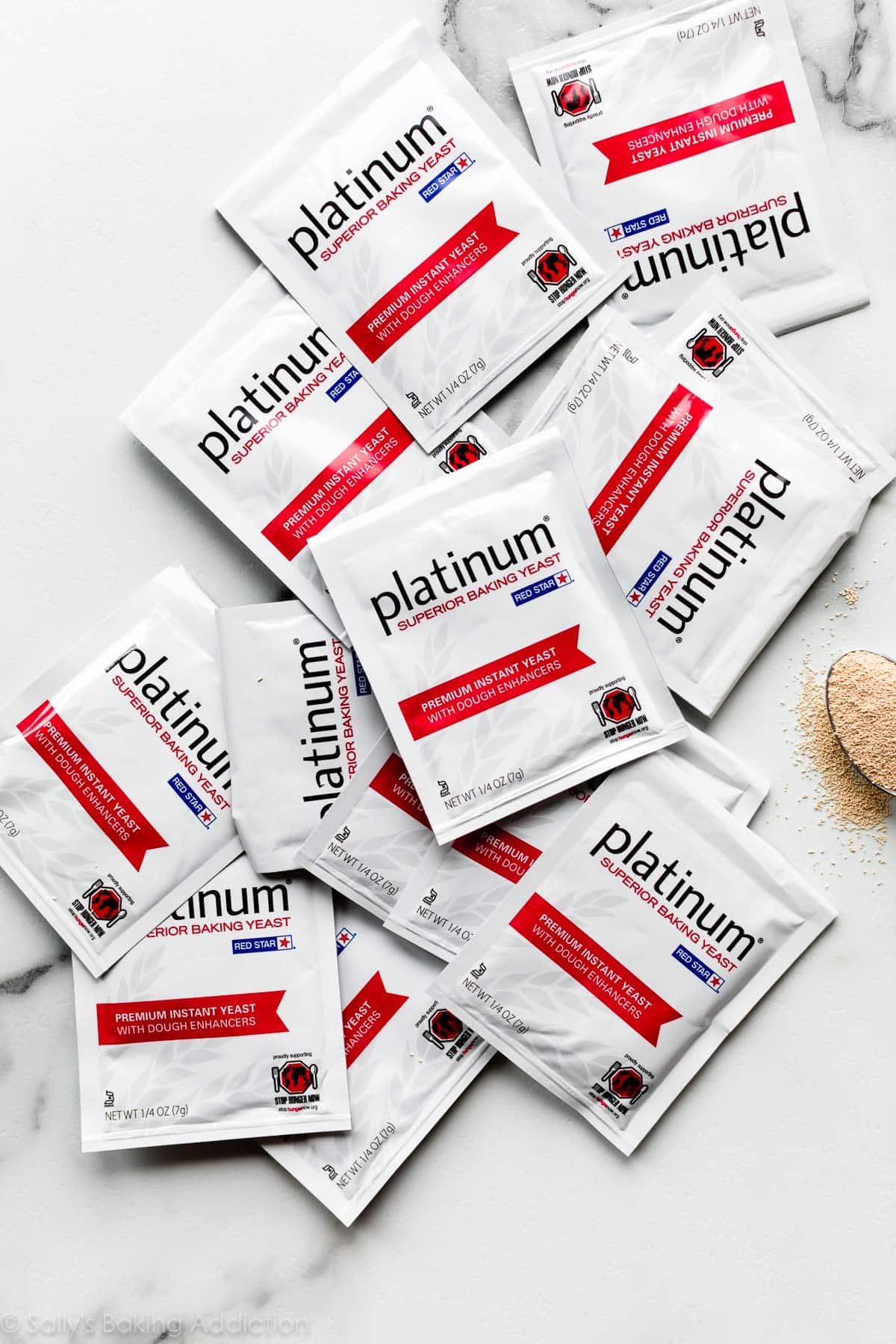
Baking with Yeast Guide
Reference this Baking with Yeast Guide whenever you work with baker’s yeast. I include practical answers to all of your common yeast questions.
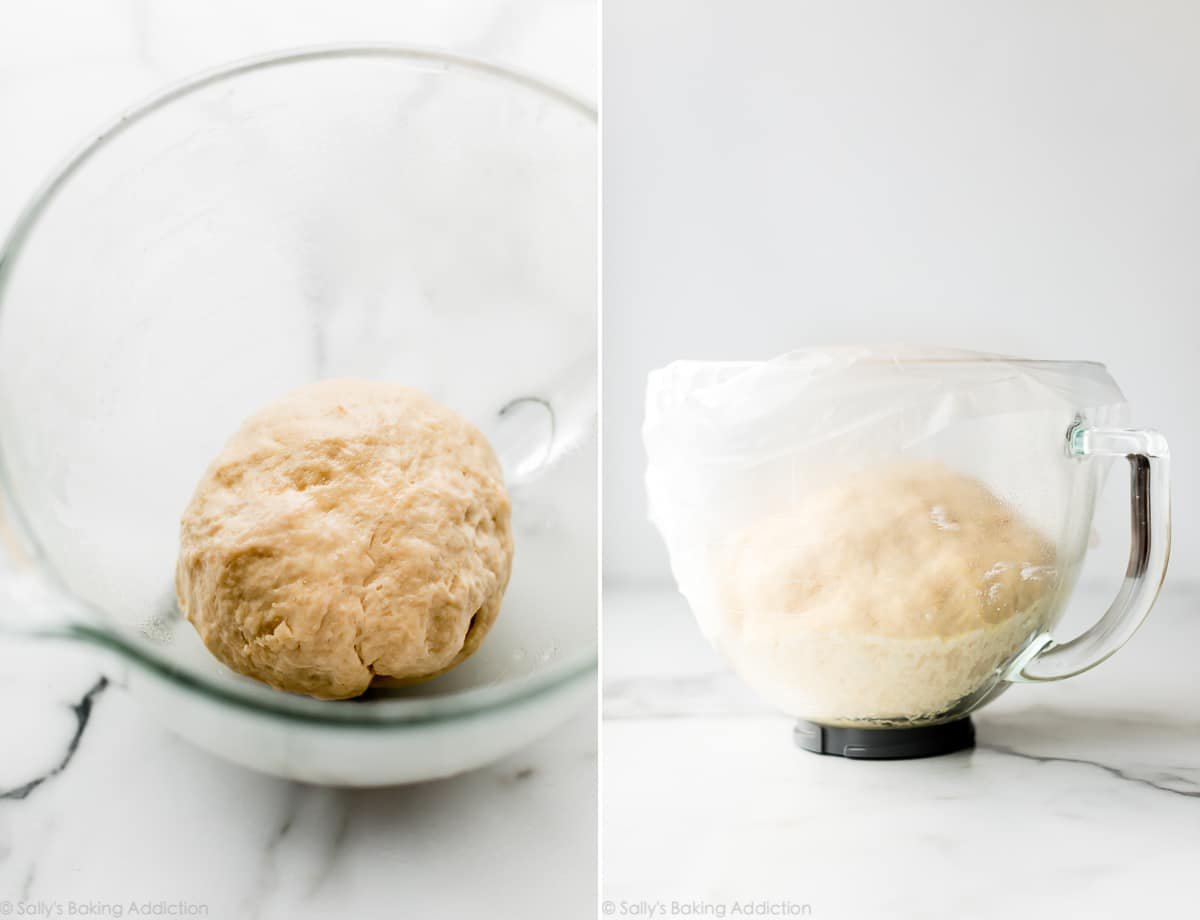
How to Shape & Assemble Cheese Bread
Remember Nutella babka and cinnamon crunch bread? We’re doing the same thing here. Pictures and explanations can only do so much, so make sure you watch the video tutorial above before assembling.
- Punch down the risen dough. Roll out into a 9×15-inch rectangle.
- Sprinkle cheese all over the top.
- Tightly roll the dough into a 15-inch log. Place the log on its seam.
- Using a sharp knife, cut the log in half lengthwise.
- Criss-cross one half, cut side down, on top of the other half– forming an X. Tightly twist the two together.
- Pinch the outer edges to seal as best you can.
By the way, there’s 2 cups of cheese stuffed inside this bread. 🙂
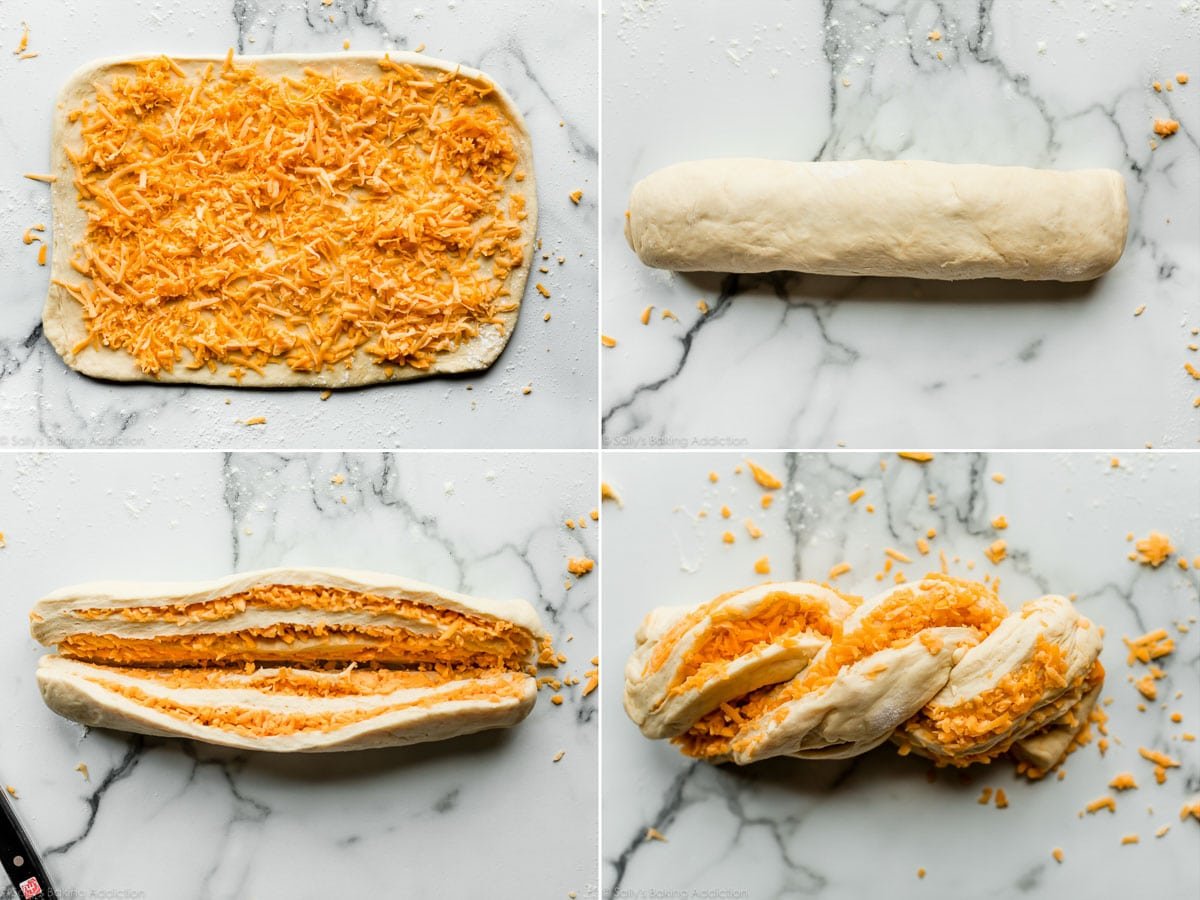
After it’s shaped, loosely cover the bread and let it rest for about 30 minutes. During this time, preheat the oven. Right before baking, brush the shaped dough with melted butter, garlic powder, and chopped parsley. Chopped basil would be excellent, too!
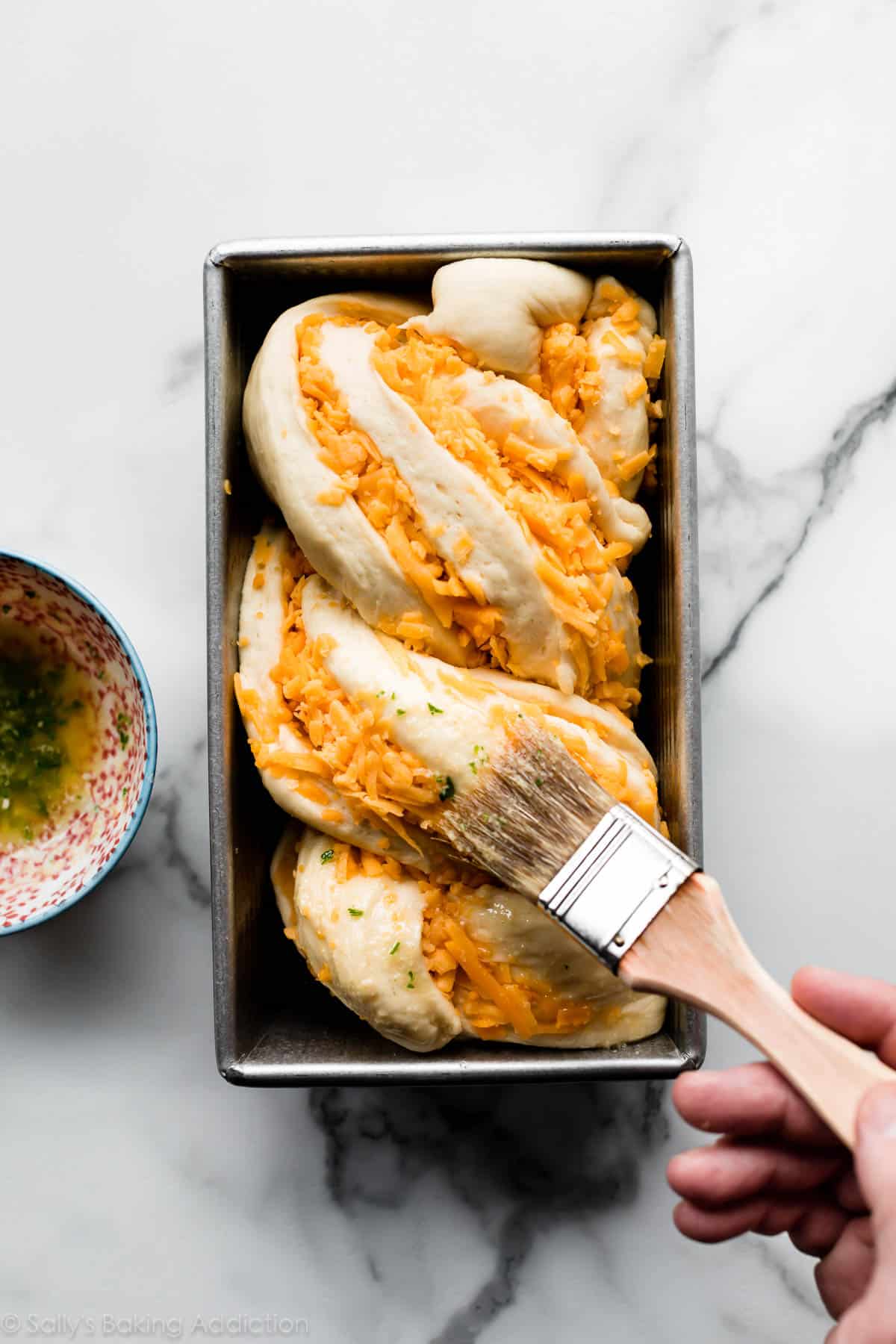
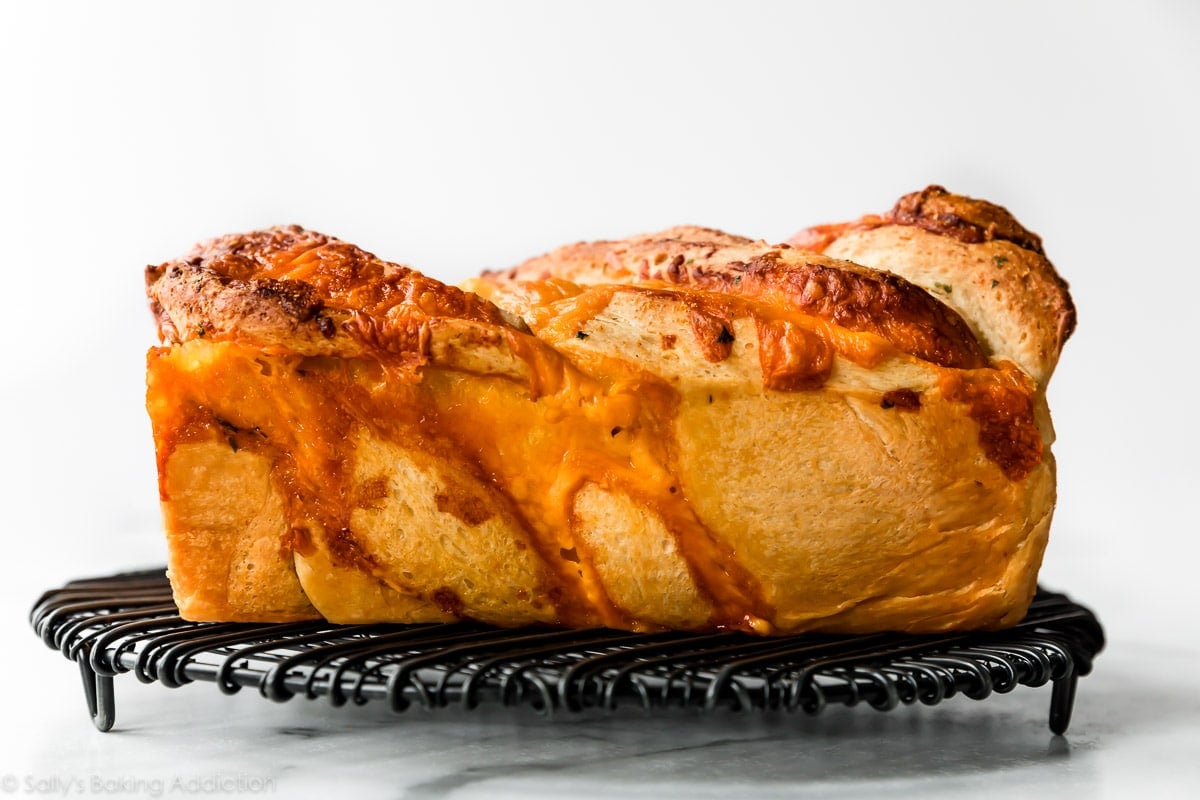
There is no sight more beautiful. No smell more heavenly. No taste more paralleled!
The best part, besides that first cheesy bite, is slicing into the loaf to reveal all those swirls of real melted cheese. Like I said, this is obviously the greatest loaf of all time.
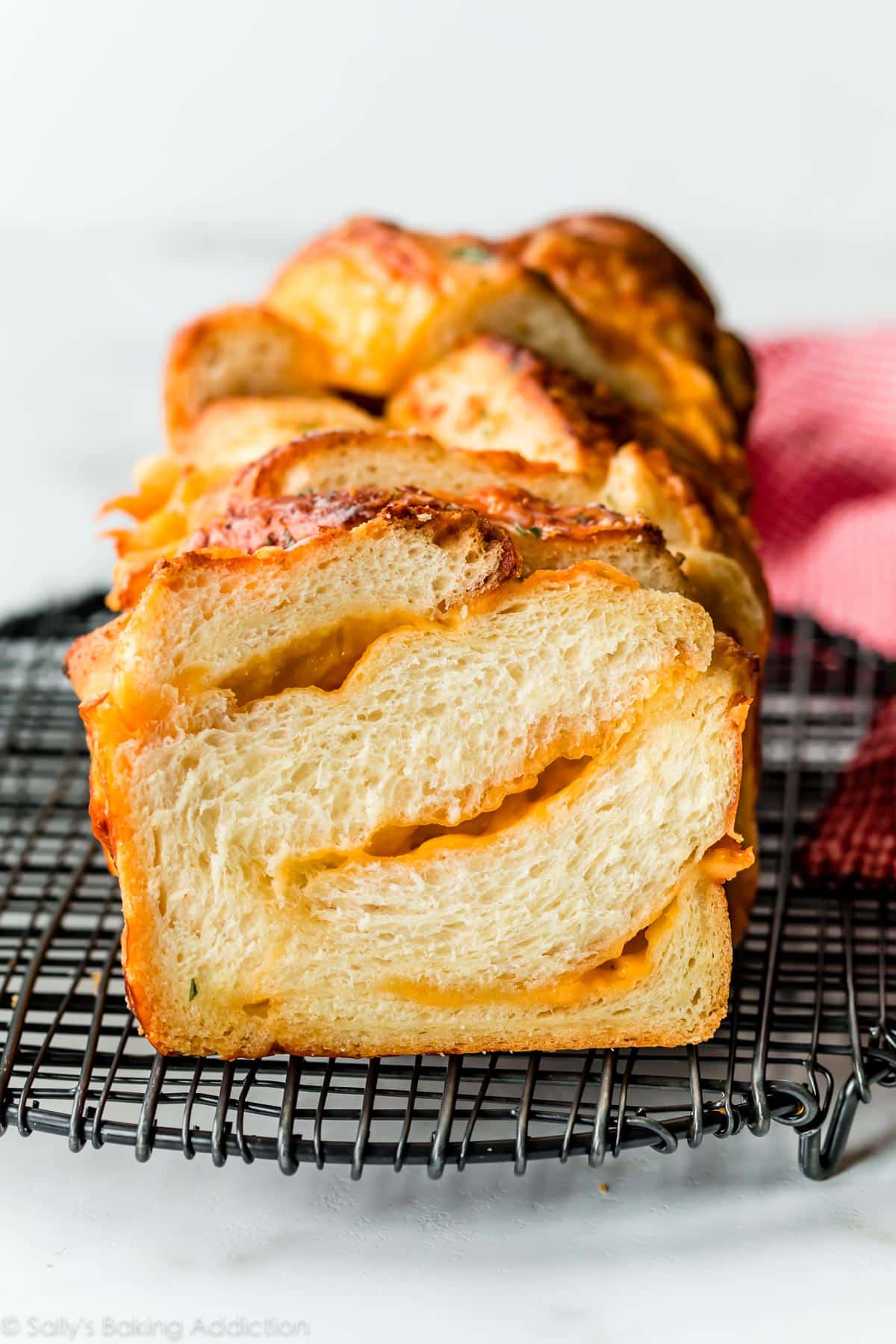
If you’re looking for an equally cheesy bread without any shaping and twisting, try my asiago-crusted skillet bread instead!
More Easy Homemade Bread Recipes
- Focaccia
- Artisan Bread
- Pizza Crust (great for beginners!)
- Homemade Soft Pretzels
- Cinnamon Rolls
- Pizza Pull Apart Rolls
- Cheddar Biscuits
- Sandwich Bread & Whole Wheat Bread
See Your Homemade Cheese Bread!
Many readers tried this recipe as part of a baking challenge! Feel free to email or share your recipe photos with us on social media. 🙂
Print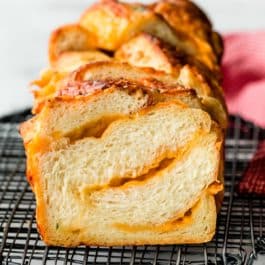
Homemade Cheese Bread – Extra Soft
- Prep Time: 3 hours
- Cook Time: 50 minutes
- Total Time: 4 hours
- Yield: 1 loaf
- Category: Bread
- Method: Baking
- Cuisine: American
Description
You only need a handful of basic ingredients to make homemade cheese bread. This soft buttery yeasted bread is twisted up with cheddar cheese, but you can use any cheese variety you love. Bake the bread in a loaf pan, then slice it to reveal the 2 cups of swirled cheese inside. See recipe notes for make ahead and freezing instructions.
Ingredients
- 1/2 cup (120ml) buttermilk, warmed to about 110°F
- 1/3 cup (80ml) water, warmed to about 110°F
- 2 and 1/4 teaspoons Platinum Yeast from Red Star (1 standard packet)
- 2 Tablespoons (25g) granulated sugar
- 5 Tablespoons (71g) unsalted butter, melted + slightly cooled
- 1 large egg, at room temperature
- 1 teaspoon salt
- 3/4 teaspoon garlic powder
- 3 cups (390g) bread flour (spooned & leveled), plus more as needed and for hands/work surface*
- 2 cups (250g; 8 ounces) shredded cheddar cheese (see note)
Topping
- 2 Tablespoons (28g) unsalted butter, melted
- 2 teaspoons chopped fresh parsley (or your favorite dried or fresh herb)*
- 1/4 teaspoon garlic powder
Instructions
- Prepare the dough: Whisk the warm buttermilk, warm water, yeast, and sugar together in the bowl of your stand mixer fitted with a dough hook or paddle attachment. Cover and allow to sit for 5 minutes.
- Add the butter, egg, salt, garlic powder, and 1 cup flour. Beat on low speed for 30 seconds, scrape down the sides of the bowl with a silicone spatula, then add the remaining flour. Beat on low speed until the dough comes together and pulls away from the sides of the bowl, about 2 minutes. *If you do not own a mixer, you can mix this dough with a large wooden spoon or silicone spatula. It will take a bit of arm muscle!*
- Knead the dough: Keep the dough in the mixer and beat for an additional 5 full minutes, or knead by hand on a lightly floured surface for 5 full minutes. (If you’re new to bread-baking, my How to Knead Dough video tutorial can help here.) If the dough becomes too sticky during the kneading process, sprinkle 1 teaspoon of flour at a time on the dough or on the work surface/in the bowl to make a soft, slightly tacky dough. Do not add more flour than you need because you do not want a dry dough. After kneading, the dough should still feel a little soft. Poke it with your finger—if it slowly bounces back, your dough is ready to rise. You can also do a “windowpane test” to see if your dough has been kneaded long enough: tear off a small (roughly golfball-size) piece of dough and gently stretch it out until it’s thin enough for light to pass through it. Hold it up to a window or light. Does light pass through the stretched dough without the dough tearing first? If so, your dough has been kneaded long enough and is ready to rise. If not, keep kneading until it passes the windowpane test.
- 1st Rise: Lightly grease a large bowl with oil or nonstick spray. Place the dough in the bowl, turning it to coat all sides in the oil. Cover the bowl with aluminum foil, plastic wrap, or a clean kitchen towel. Allow the dough to rise in a relatively warm environment for 1.5-2 hours or until double in size. (I always let it rise on the counter. Takes about 2 hours. For a tiny reduction in rise time, see my answer to Where Should Dough Rise? in my Baking with Yeast Guide.)
- Grease a 9×5-inch loaf pan.
- Shape the bread: Punch down the dough to release the air. Place dough on a lightly floured work surface and with a floured rolling pin, roll the dough out into a 9×15-inch rectangle (approximately). Sprinkle cheese all over the top, leaving a 1/2 inch border uncovered.
- Watch the video above to see exactly how I do this step. Tightly roll the dough into a 15-inch log. Place the log on its seam. Using a sharp knife, cut the log in half lengthwise. I find a serrated knife works best. Criss-cross one half, cut side down, on top of the other half—forming an X. Tightly twist the two together. Pinch the outer edges to seal as best you can. If you have any leftover cheese, cut a few small squares and tuck into the dough as shown in the video above. This is optional and simply for extra cheesy pockets! Place in prepared loaf pan and cover with aluminum foil, plastic wrap, or a clean kitchen towel. (This step can get a little messy.)
- Allow the covered loaf to rest for 30 minutes. It will slightly rise during this time.
- Adjust the oven rack to the lower third position. Place a baking sheet on the lower rack to catch any cheese or butter that may drip down. Preheat the oven to 350°F (177°C).
- Topping: Whisk the melted butter, herbs, and garlic powder together. Drizzle or brush on top of dough.
- Bake: Bake until golden brown and, when gently tapped, the top of the loaf sounds hollow, about 45-55 minutes. If you find the top of the loaf is browning too quickly as it bakes, tent with aluminum foil. (I usually place foil on top after about 25 minutes.) Remove bread the oven and place on a wire rack. Cool for 10 minutes in the pan, then remove from the pan and cool loaf on the wire rack.
- Slice and serve. Cover and store leftovers at room temperature for 2 days or in the refrigerator for up to 1 week. Leftover slices taste delicious when warmed in the microwave for 10 seconds.
Notes
- Make Ahead Instructions – Overnight: Prepare the dough through step 3. Place into a greased bowl as directed in step 4. Cover the dough tightly and place in the refrigerator for up to 15 hours. Remove from the refrigerator and allow the dough to fully rise for 1-2 more hours. Continue with step 5. I don’t recommend shaping the bread the night before as it will puff up too much overnight.
- Make Ahead Instructions – Freezing: Baked bread freezes wonderfully. Wrap the cooled loaf in plastic wrap, then a layer of aluminum foil. Freeze for up to 3 months. Thaw wrapped bread overnight in the refrigerator or at room temperature, then warm to your liking. You can also freeze the bread dough. After punching down the dough in step 6, wrap the dough tightly in plastic wrap, then a layer of aluminum foil. Freeze for up to 3 months. Thaw overnight in the refrigerator, then punch the dough down again to release any air bubbles. Continue with the rest of step 6.
- Special Tools (affiliate links): Stand Mixer or Large Glass Mixing Bowl | Silicone Spatula or Wooden Spoon | 9×5-inch Loaf Pan | Rolling Pin | Whisk | Pastry Brush | Cooling Rack
- Buttermilk: Buttermilk provides the softest texture and unbeatable flavor. In a pinch, you can use whole milk instead. Lower fat or nondairy milks work in a pinch, but the bread won’t taste as moist or rich. Here are other recipes using buttermilk if you purchase a carton and need to use it up.
- Yeast: Platinum Yeast from Red Star is an instant yeast. You can use Red Star Yeast active dry yeast instead. Rise times will be slightly longer using active dry yeast. Reference my Baking with Yeast Guide for answers to common yeast FAQs.
- Bread Flour: Higher protein flour like bread flour is best for this bread recipe because of its strong gluten formation and high rise. All-purpose flour will yield a flimsy bread.
- Cheese: I recommend cheddar cheese in this recipe, but you can use another relatively harder cheese such as pepper jack, gouda, or colby cheese. Avoid very soft cheeses. For best taste and texture, shred cheese off the block yourself with a cheese grater. Pre-shredded cheese is drier than freshly shredded. If you have extra cheese, cut a few small squares to stuff inside the twisted bread, as noted in step 7.
- Herbs in Topping: Use your favorite herb in the topping. If using dried, reduce to 1/2 teaspoon.
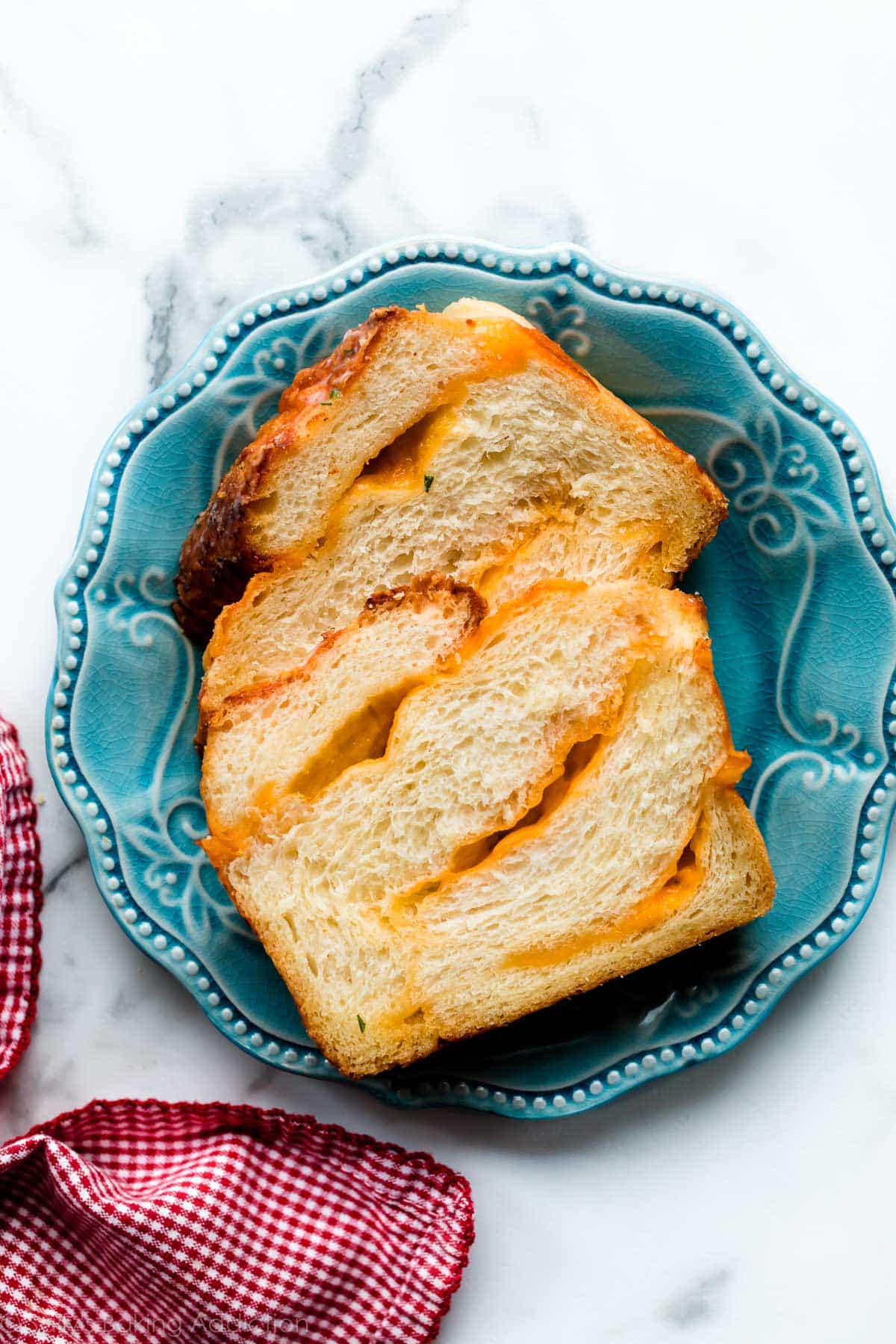
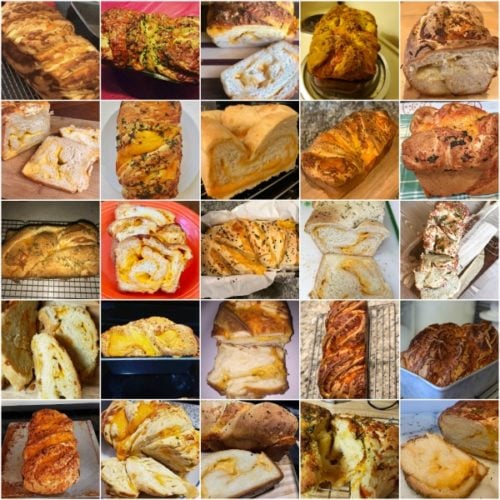
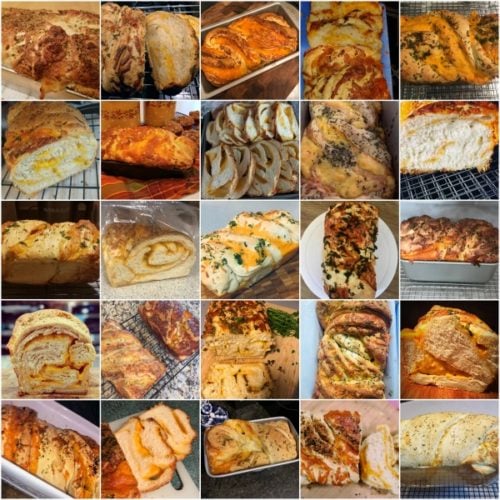
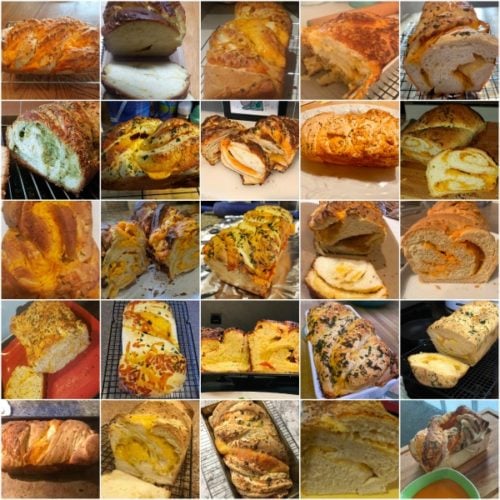
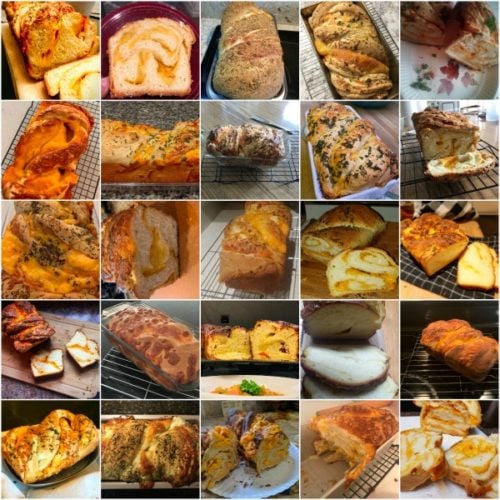
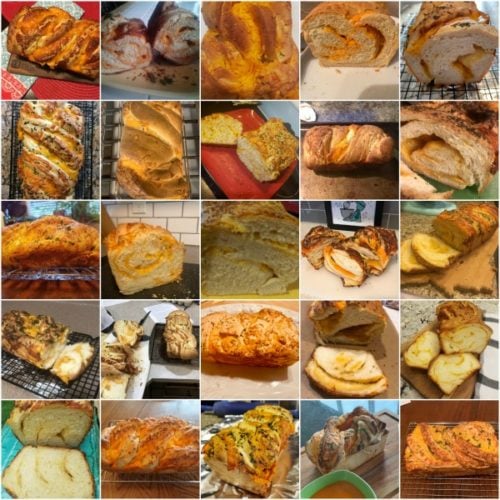
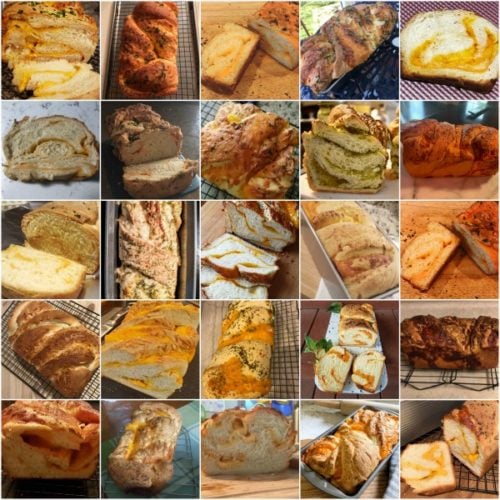
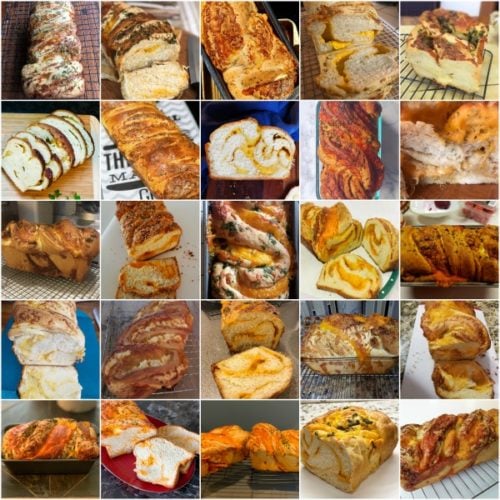
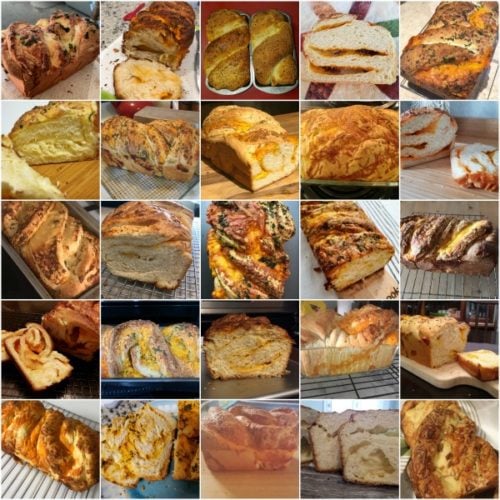
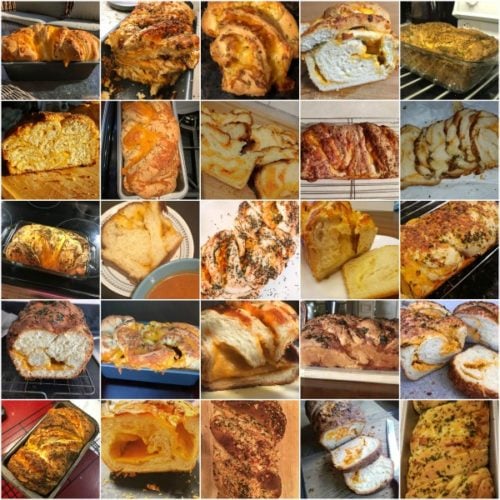
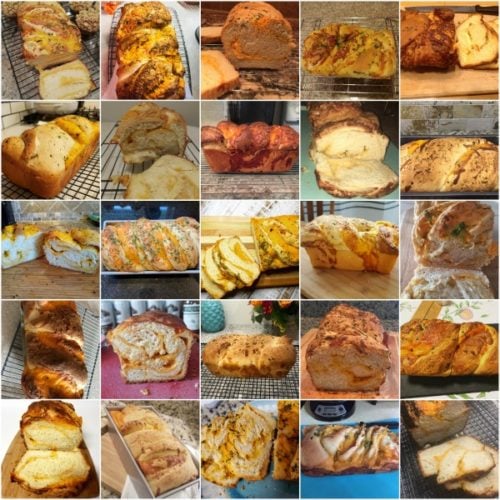
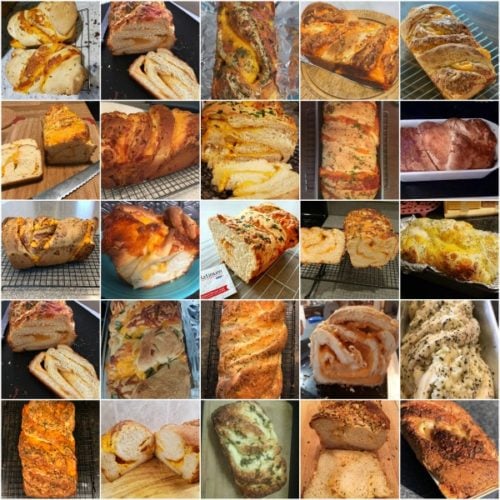
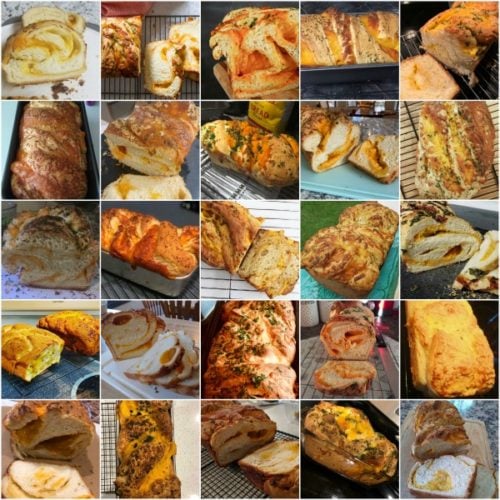
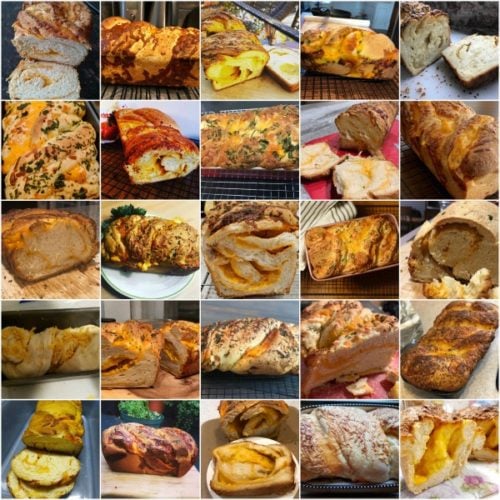
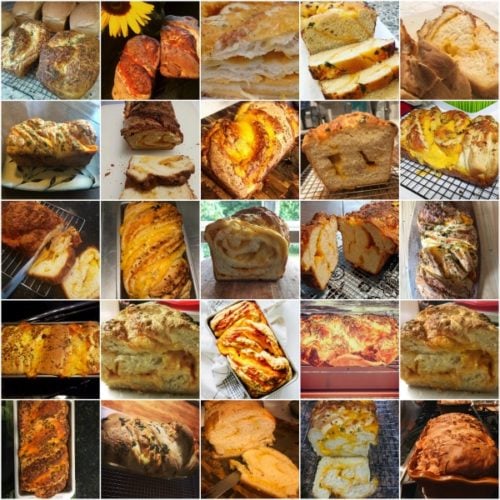
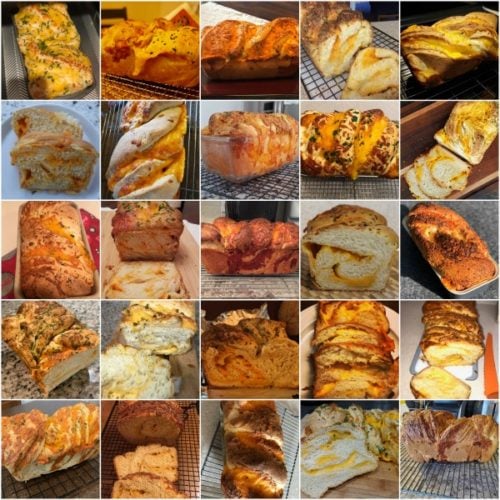
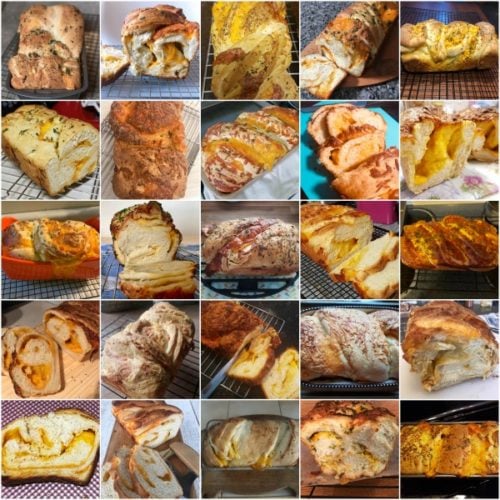
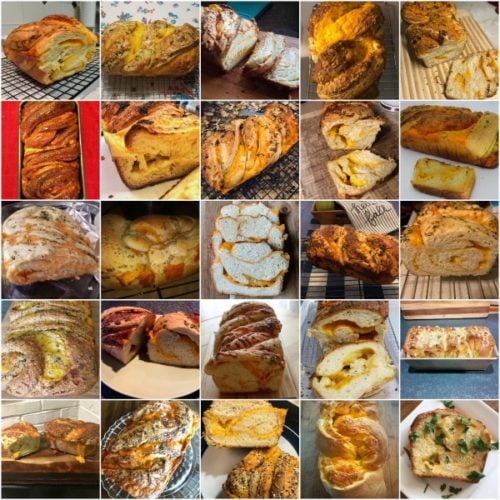
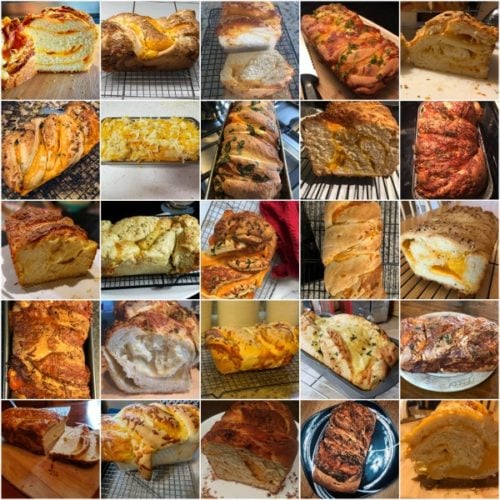

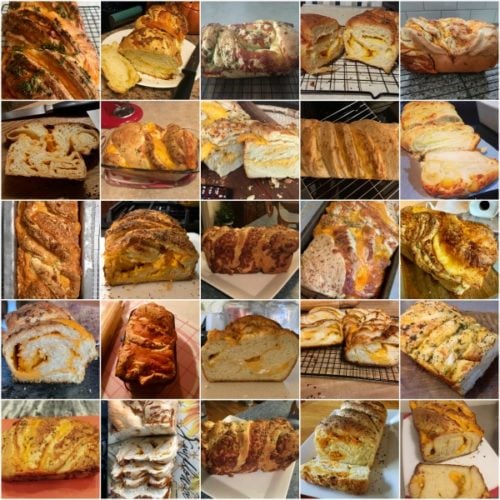
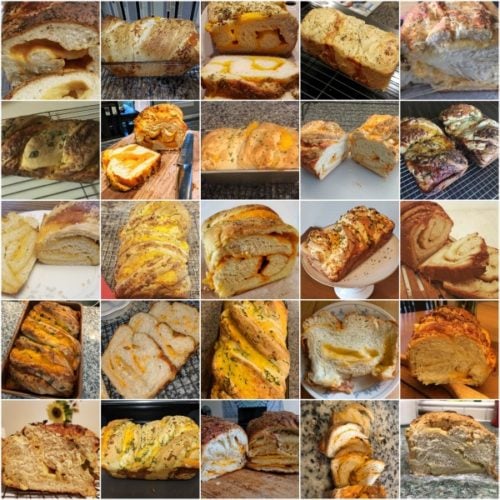
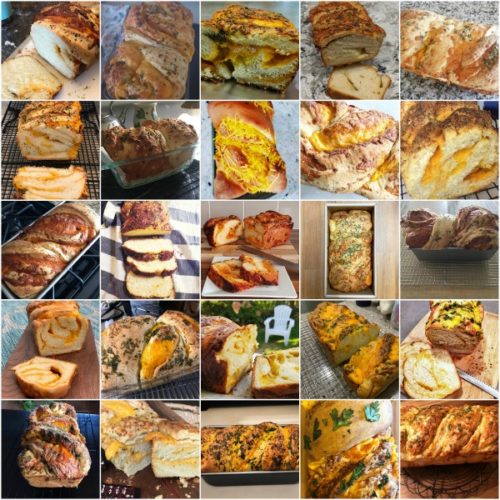
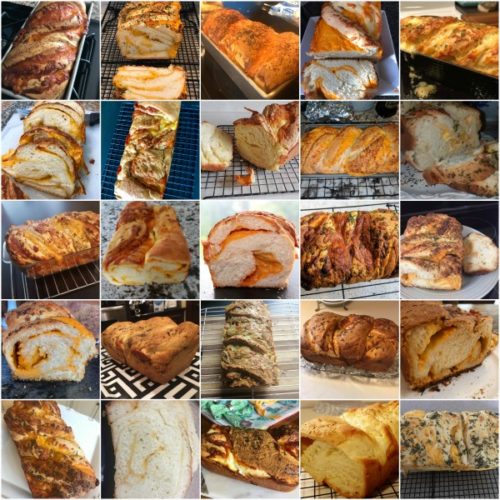
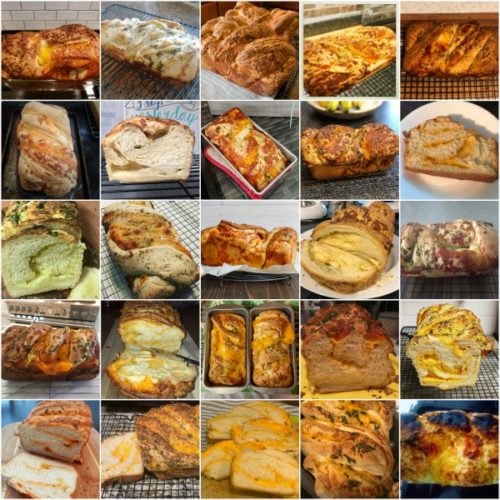
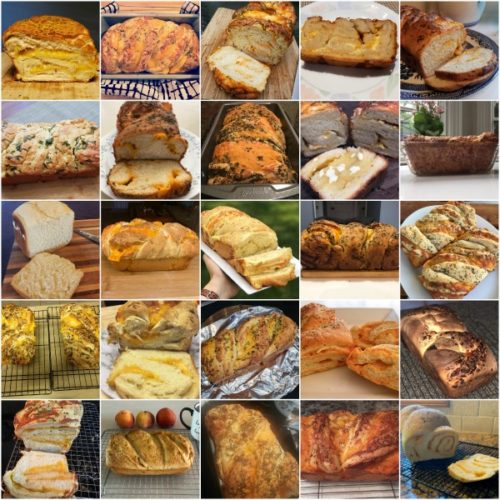
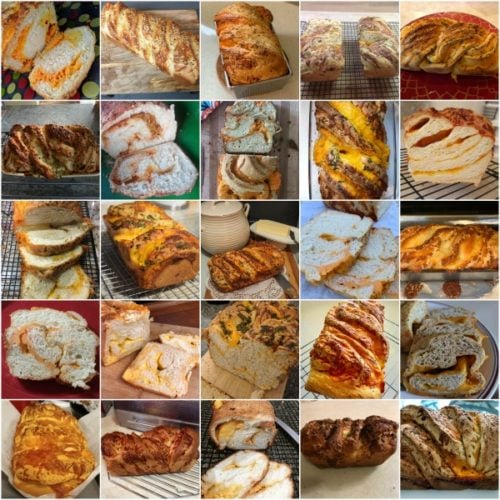





















Quantity mistake in this recipe: The recipe calls for 2 cups (250g, 8 ounces) of grated cheddar cheese.
1 cup of grated cheddar cheese is 235g.
The recipe should read 470g, of cheese.
A lot of cheese!
Hi Roy, there isn’t a mistake with the weight. 1 cup of shredded cheese (4 ounce weight) weighs about 125g, so you’ll need 250g.
This recipe looks great! Could it be made in a mini loaf pan? Like a 5×3?
Hi Kendall, this recipe as written will be too much dough for that size pan, but you could try dividing the dough up over several pans. We’re unsure of the exact bake time or yield. Let us know if you try it!
I love this bread and have made it several times. Can you add sliced jalapeño to the dough before baking?
Hi Nancy, you could add up to 1 diced jalapeño, depending on how much spice you’d like. Enjoy!
Can I use an 8.5 rather than 9″ loaf pan?
Hi Evie, yes you can–enjoy!
I am new to bread making (got all your beginner emails, thanks!) and am a little intimidated by the twist in the dough. If I just roll and not twist do you think it will bake properly? I need a win right out of the gate so all this Red Star yeast I bought doesn’t go to waste! Thank you for all the baking inspiration!
Hi Meg, that shouldn’t be a problem to skip the slicing and twisting. Enjoy!
One of my favorite bread recipes!!! I have made this numerous times – turns out perfect every time. Great taste, great texture – easy!!!
This recipe healed my depression. ⭐️ 5 stars
Awesome!! My wife keeps asking when I’ll make cheese bread again. I guess I have to do it soon!
Delicious! I did only 1 tbsp sugar, and skipped the herb and butter topping. The crust is a bit crispier than I prefer, but I can see that others would be crazy about it – it is both crispy and flaky. Loved the garlic in the dough
Easier than I thought! I made this tonight. The house has a warm garlicy aroma. It turned out beautiful!
I’ve made this a few times now and I add layered pepperoni on the cheese to make pizza bread (as my kids call it) and we just tear and dip in sauce. Usually as a side with pasta. So good! Currently have some dough sitting on its first rise – I added Italian seasoning this time! Hope it turns out lol
I love this recipe so much that I use it all the time as a daily bread omitting the cheese and garlic. Sometimes add them for a special side dish dip but mostly without. It’s lush !
I make lots of different breads but I use a bread machine to mix and knead the dough and then I remove it to do what I want with it, as I can’t do the kneading. Would this dough work in a bread machine?
Hi Jan, we haven’t tested this recipe in a bread machine, but we can’t see why that wouldn’t work. Let us know how you like the bread!
Question: Can I use this bread recipe as a base and put different fillings (raisins and cinnamon etc.)?
Hi Madison! Yes, absolutely.
Nice recipe, next time I would put in 1 tbsp of sugar to decrease the sweetness.
I love this recipe and have made it quite a few times before. My question is can I do the second rise in the loaf pan in the refrigerator overnight?
Hi Tom, no, I don’t recommend it because this carefully shaped bread will rise/puff up too much. That second rise needs to be kept short.
Made this recipe in bread machine in “Dough Mode” and it turned out perfect by putting all ligquids in first then all dry on top last adding yeast.
Wow! This recipe is fantastic. I didn’t roll it correctly, but it was amazing regardless
Best bread ever. Nobody can get enough. And everyone begs me to bake more. Thanks for a great recipe!
I love this recipe. In fact I will be making more. My question is this. You state that you can use any hard cheese. What happens if you use a soft cheese?? And is fresh goat cheese considered hard or soft?
Hi Cheryl, a soft cheese will make the bread harder to shape and the cheese will melt more during the baking process. Fresh goat cheese would be considered a soft cheese. We’re glad you enjoyed the bread!
This recipe came out perfect made exactly as written. The flavors go perfectly together. The buttermilk with sharp cheddar are a perfect match for the rich butter and egg bread dough. The video on how to form the loaf and the hint to cover the loaf with foil early in the baking process made it an absolute success. Thank you for all the details included in the recipes on this site.
Couldn’t watch video because ads took over, so sad you have to ruin a good thing. Recipe looks wonderful
This is helpful feedback, Cheri. You aren’t the only reader noticing this because we actually had a spammy influx of ads appear on the site over the weekend. I have put in requests to rid them, so the layout will look much lighter. (5 spammy placements have already been removed.) Thank you again for letting us know.
This recipe is fantastic! I have made it 5 times in the last month. I have found that you can switch up the filling to just about anything. I made it without filling and half whole wheat flour, too and it makes lovely sandwich bread. I made it with fried apples, cinnamon and brown sugar for breakfast 10/10. Also, I made it with cheddar cheese, bacon, and jalapenos. SO GOOD!
If i am doubling the recipe, do i double the yeast aswell? does all the rising and baking time stay the same?
Hi Sophie, For best results, we always recommend making two separate batches. Though some readers have doubled this dough successfully by doubling each ingredient. The first rise time will be longer since there’s more dough.
Had a request from my brother for cheese bread. Found this in my bookmarks. It’s delicious. Definitely would not have fit in my loaf pan (which had your cinnamon swirl bread in it anyways.) Making this again very soon.
Can I use a bread machine for this so I could just put everything in and let it do its job? If yes, I’m wondering which setting I would use for a Panasonic bread machine.
Hi Melinda, We don’t own a bread machine and haven’t tried it ourselves, but other readers have reported success doing so. Hope you enjoy this bread!
I used a bread maker to mix, knead and rise. There’s no way you could usually it to bake, I think.
Just made this and it is delicious!
Want to try this recipe but i don’t like the taste of egg breads. There is a way i could adjust this recipe without adding the egg?
Hi Kim, the egg provides necessary structure and flavor, but doesn’t taste eggy. We haven’t tested any egg substitutes in its place, but let us know if you do any experimenting.
Can you use semolina flour?
We haven’t tested it, so we’re unsure of the results here. Let us know if you do decide to give it a try.